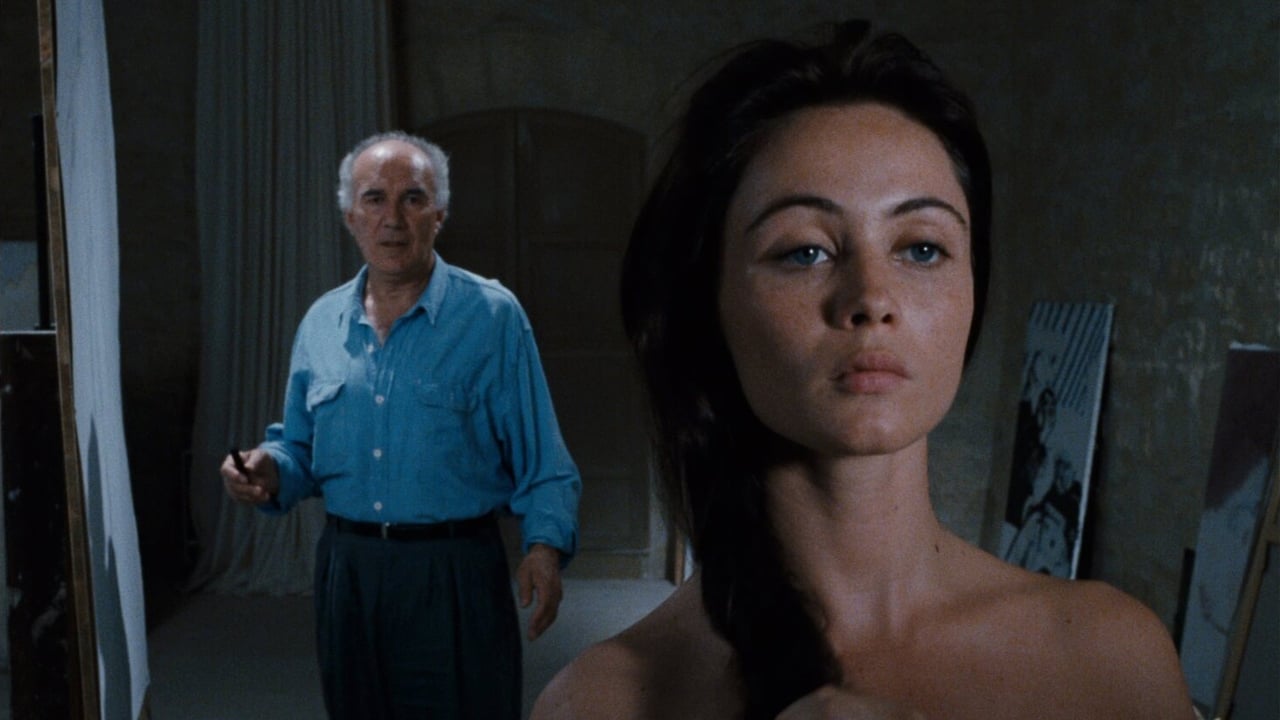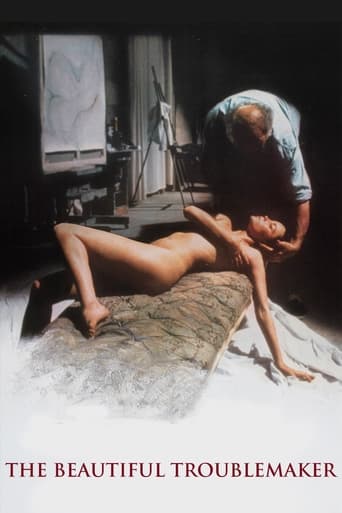



Self-important, over-dramatic, uninspired.
A Major Disappointment
It's fun, it's light, [but] it has a hard time when its tries to get heavy.
View MoreIf you're interested in the topic at hand, you should just watch it and judge yourself because the reviews have gone very biased by people that didn't even watch it and just hate (or love) the creator. I liked it, it was well written, narrated, and directed and it was about a topic that interests me.
View More...that it seems to be an unintentional ASMR (autonomous sensory meridian response) movie. In fact, if you access the ASMRlab HomePage, it cites one such trigger (to ASMR) as the painting of Bob Ross.Beart's stare is hypnotic. She rarely blinks. When she does 'blink' it becomes a slow and controlled event. Her stare works very well and no doubt plays a part in this calming mood that Rivette exploits so well.The drawing is never tedious. In fact I found myself marvelling at just how compelling such 'mundane' activity can be. I was drawn-in by its effect (every pun intended!)One of the movie's great oppositions is to place the emotional turmoil in both couples' lives against the almost hypnotic, soothing calm of the atelier where Frenho and Marianne are at work.Liz, Frenho's wife and prior muse (Marianne is set to topple her) paints a cross on the reverse frame of La Belle Noiseuse painting. Frehno walls up the painting, even after noticing the cross his wife has painted. It is like Propero breaking his staff, committing his art to posterity, to work no more.As Liz and Frehno lie abed, the full-moon projects the frame of the window - cross-like - on the wall: their bed has become a grave. Liz recalls having seen Frehno asleep in the studio: she had thought he was dead, and their life as lovers too.All these images of the cross and the grave leads us to ask: what is the moment of resurrection? Is it not Marianne seeing herself 'cold and dry' as LBN? Does she not then make a resolution to leave her dead self behind? And as she leaves, have not Liz and Frenho new life too? We have hope, perhaps...?Contradiction-wise, while gazing at the shooting-stars, Frenho asks Liz to make a wish. She says that she does not have the capacity to be surprised anymore. Then when Balthazar, Nicolas and the art-buyers turn- up, Liz realises that Frenho has switched paintings (as the LBN he intends to sell is not the LBN Liz placed the cross symbol on!) and she remarks that Frenho has surprised her ... hope indeed!
View MoreI remember years ago when I heard about this film, Rivette's La Belle Noiseuse, that it had basically a woman being naked for most of the run time - the context of course being that a man is painting from a life nude model - and it piqued my interest for the simple salacious aspect of it. And objectively speaking Emmanuelle Beart is an attractive woman with a good body. But if you're a man and only looking at this for the reasons that men go online to look at a lot of, well, videos, you're bound to be disappointed by the simple fact that Rivette is not out in the slightest to portray Beart that way (and, of course, I don't think Beart would have agreed to such a film, certainly not one of this length at four hours - and she is naked for a lot of screen time). The film is actually ABOUT something really, which is the artistic process itself.It's Rivette taking his time, showing painter Michel Piccoli trying to make his painting over several days, who is excellent and subtle and both intellectual and emotional with his character in revealing this artist to us (or, sometimes, holding back in equal measure), with Beart having a kind of mental/emotional tug of war with him. What does he want out of her? What does she want out of him? Is there any particular mind-game to speak of? With Rivette there always is, and if one sticks with the film, it pays off in dividends. I remember watching this twice and getting more out of it the second time, and it introduced me to the director's style of sitting back and not simply waiting for things to happen, but creating a certain mood where anything is possible - in this case, art about the creation of art, which is often tumultuous, even, indeed, kind of dull (but it'll only be dull to dull people).
View MoreThis film is for your "right" brain. If you have the patience to be attentive throughout this extraordinarily long film (the nearly 4-hr version), you will absorb a glimpse into the "creative process." Not to be "hoity-toity" about this matter, but this is truly a masterpiece of a glimpse into the creative process of a great artist, his relationship with his subject, and the final disposition of the result of their collaboration.And he could have no better subject for his study of the human form than the ethereal physical perfection of Emmanuelle Béart - not to take anything away from her expertise as an actor.This is a contest - one to which both Piccoli and Béart are more than equal.Find the time. Sit back and relax. Get a drink or two, if you must. but PAY ATTENTION! Opportunities like this don't come along very often.
View MoreUnless you're a New Wavelet devotee or your intellectual capacities are wide, Jacques Rivette is a filmmaker who isn't very close to many average viewers. In many of his films he loses himself amid his intellectual ideas and doesn't mind developing them while neglecting notions of storytelling, progression in narration and time. Consequently, the average length of his works is of about two hours and a half. Many filmmakers left very long films too. But they keep in mind that their films are destined to be understood by the general public and so obey to rules of clarification in their accessible stories."La Belle Noiseuse" is one of his most palatable pieces of work in spite of its challenging length. It clocks in at 4 hours but don't panic, time won't seem long to you for Rivette keeps a decent linearity from the first reunion with the main characters of the film to the surprising final denouement to the agreement of Marianne (Emmanuelle Béart) to serve as a model for the painter Frenhofer (Michel Piccoli). Along their adventure, some details will witness the progression of the story: Marianne sleeps in Frenhofer's mansion while the latter falls asleep in his studio. An aesthetic refinement freely sourced from Honoré De Balzac's novel "the Unknown Masterpiece" and perhaps the son of "le Mystère Picasso" (1956) by Henri-Georges Clouzot, Rivette's piece of work is a dive in the twists and turns of artistic creation and all that it can comprise with its times of hopes, doubts, fears. Frenhofer naturally starts with a series of sketches and continues with numerous paintings attempts and countless, testing poses for Marianne. The two characters are engaged in a creative process that is highly likely to leave them exhausted to say the least. The filmmaker deftly taps the scenery of the mansion and notably the studio where he locks for the major part of the film, Marianne and Frenhofer for better and for worse. A painstaking care is given to sound with the squeaking of charcoal and brush. To better capture the sense of spontaneous creation, Rivette fell back on methods worthy of the New Wavelet and notably Godard's: he shot his film without a script near him and perhaps that's why many moments seem extemporaneous. But unlike Godard's smug works, Rivette's one remains quite understandable as a whole.A dark legend surrounds this film about its success, one of the few Rivette enjoyed all along his career. Was it due to Emmanuelle Béart's nudity? "La Religieuse" (1966) was banned because it was deemed as shocking for a major part of the population according to the censors. This banning contributed to the popularity of the film. So, it would seem that Rivette has to put elements likely to be scabrous to make himself accepted by general public.
View More